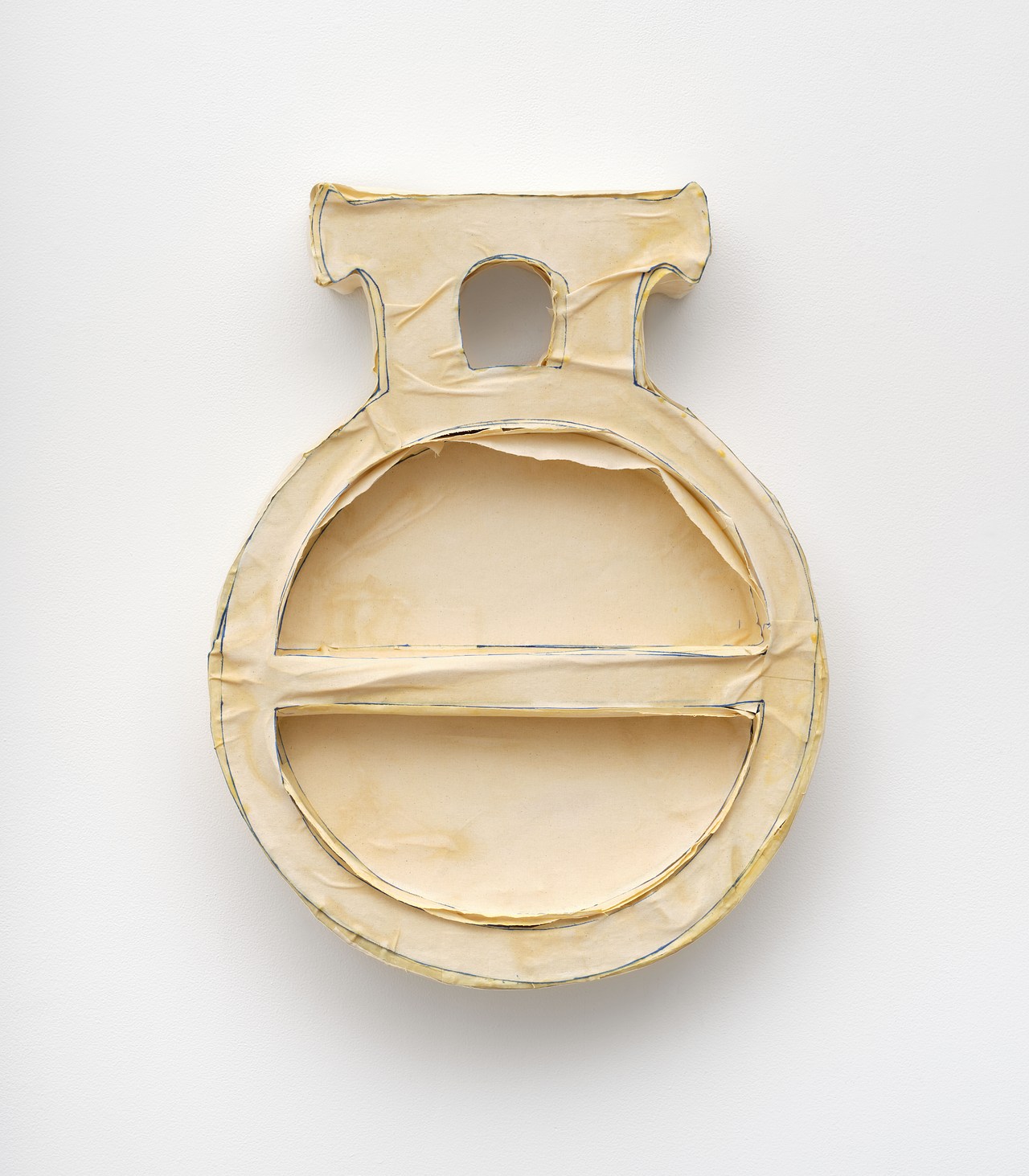Dead Zone (4)
2019 - Sculpture (Sculpture)
33.66 x 31.75 x 31.75 cm
Aria Dean
Although typically sold today as a novelty item for flower arrangements and interior decorating flourishes, cotton can also be seen as a proxy, through synecdoche, for US slavery. Dead Zone (4) by Aria Dean presents a preserved blossom of that trade’s primary cash crop, cotton, crystalized in a state of non-decay whilst encased under protective glass. Hidden in the base of the work is a signal jammer which prevents mobile phones from broadcasting when nearby. Although temporary, this scrambling slows the ability of audience to market themselves through proximity to Aria Dean’s item of cultural capital—considering the work’s subject, this also begs the question: who gets to represent who, what, and how when it comes to the spectacle of marketing images of pain, symbolized here through cotton, a commodity historically extracted from Black slave labor.
Through art, text, and exhibition making, Aria Dean analyzes the structure and circulation of images and subjectivities in relation to material, cultural histories, and technology. In particular, Dean has established herself as one of the leading young theorists in the discussion around Black cultural production and its appropriation in material culture through the paradigmatic essays “Poor Meme, Rich Meme” and “Notes on Blacceleration.”
Colors:
Related works sharing similar palette
» see more

© » ARTS EQUATOR
How Dép Tổ Ong Goes From Timeless Family Keepsake to Millennial Icon (via Saigoneer) | ArtsEquator Thinking and Talking about Arts and Culture in Southeast Asia Articles September 16, 2018 Back in 2014, amid the weekly cycle of news, a particular image was more striking than most: Doctor and Professor Ngo Bao Chau stood in the middle of a makeshift classroom in a rural village in Thai Nguyen Province while teaching local kids...

© » KADIST
Alejandro Marré
2007Typical Weapons is a series of sculptural interventions where Alejandro Marre transforms traditional Guatemalan craft objects usually sold as souvenirs into weapons...

© » KADIST
Sam Contis
2014Sam Contis’s photographs explore the relationship of bodies to landscape, and the shifting nature of gender identity and expression...
Related works found in the same semantic group
» see more

© » KADIST
Hank Willis Thomas
2014Shot in black and white and printed on a glittery carborundum surface, Black Hands, White Cotton both confronts and abstracts the subject of its title...

© » KADIST
Alicia Henry
2019Out of simple materials, Alicia Henry creates enigmatic, somewhat troubled characters, which reveal her interest in the complexities and the contradictions surrounding familial relationships...

© » KADIST
Gyempo Wangchuk
2016The various distinct but connected lineages of Himalayan painting remain thriving languages employed by artists from across the region to express their unique perspective in our shared contemporary world...

© » KADIST
Fred Wilson
2009Fred Wilson’s flag paintings document the 20th century history of African people, indexing the period of liberation from colonialism...

